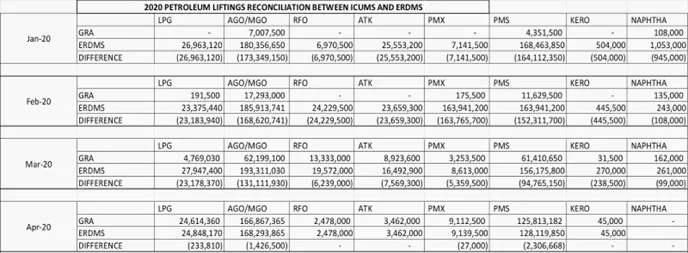
In a bid to tackle the problem of petroleum product malpractices ranging from adulteration, smuggling to dumping, the National Petroleum Authority (NPA), has instituted innovative strategies to stop the negative activities primarily aimed at improving upon the quality of petroleum products to ensure fuel supplied at final dispensing outlet is of the right quality specification to consumers.
Among the key strategies are the revision of operating procedures in the importation, exportation and production of fuels by petroleum service providers (PSPs) and the recently introduced Petroleum Product Marking Scheme (PPMS) and Bulk Road Vehicle (BRV) tracking system to secure quality of products served to consumers.
These have enhanced the supervision and monitoring of the importation, exportation, processing, supply, transportation, storage, distribution and marketing of petroleum products.
Required Specification
Petroleum products are either imported or refined locally from crude oil into finished products. Storage for imported products are discharged to Tema Oil Refinery (TOR) or various depots of Bulk Distribution Companies tank farms upon vessel arrival.
Before the discharge, a sample of the product is taken by officials from TOR or Ghana Standard Authority and an independent inspector appointed by the Petroleum Service Provider (PSPs) with vessel at anchorage.
The sample is then taken to the TOR laboratory for testing and analysis done in the presence of parties that is officials from TOR as well as the independent inspector and importer. The quality certificate of the analysis is then sent to the NPA for consideration.
Once product quality meets the local standards, approval is given for vessel to berth to discharge product. Should the product specifications not meet the local standards, the vessel is not allowed to berth to discharge the product.
In rare cases, substandard products are admitted for correction but at refineries only to the required specification at its own cost.
After modification, the product is then subjected to a further analysis and the quality certificate sent to the NPA for consideration.
In the event that the petroleum service provider contests the certificate of quality, the Authority appoints an independent inspector for another sample analysis to be conducted in the presence of all parties.
Based on the results of the sample analysis conducted by the independent inspector, the Authority decides whether the product in question is good for the market or otherwise. Cargoes that do not meet specification are rejected. Vessels are permitted to discharge after all the conditions are met.
It is important to note that Tema Offshore Mooring, operators of the primary berthing facility for imports, does not allow product discharge through their facility unless the cargo meet approved quality or standard certified by the TOR laboratory and discharge clearance issued by the NPA.
Once green light is given, discharge commences into storage facilities at various depots for subsequent distribution by the Oil Marketing Companies to the various outlets in the country.
Measures to Check Adulteration
As a result of NPA's objective to ensure that bad industry practices do not thrive at the expense of those playing by the rules, the Authority introduced the PPMS and BRV Tracking System to ensure that products are devoid of adulteration and meet the required specification as is loaded from the depots to retail outlets and right destination.
PPMS
PPMS involves the addition of a bio-chemical liquid (fuel marker) into the petroleum products at the loading depots prior to delivery of the products to the retail outlets. The marker creates a "finger print" and provides a secure, tamper-proof method of authentication.
Low levels of the marker are usually applied to the petroleum product and the concentration of the marker can only be detected by patent-protected portable field devices. These devices are used by field monitoring officers to detect violations. Offenders are duly sanctioned in accordance with LI 2187.
At the initial stages of the program, the failure rate among retail stations was 32 per cent. The program has been successful as failure rate has decreased to less than 2 per cent as at December 2016. The scheme has in place strong penalty to deter practitioners from breaches.
BRV Tracking Scheme
Frequent cases of compromised quality among others due to lack of visibility in the operations of BRVs led the NPA to commission this tracking scheme.
Evidence so far proves that almost everything monitored by a Global Positioning System (GPS) tracking system, volume sensors and web based monitoring application has worked to reduce costs, provided information and alerted on any discrepancies concerned with movement of the trucks being monitored.
Conclusion
The effects of bad fuels are devastating. Bad fuels cause engines to malfunction and come at extra cost to the consumer to restores damaged engines. Bad fuels also generate toxic fumes that pollute the air and are harmful to the health of the people.
It is noteworthy that putting in place the PPMS and Quality Monitoring programmes by the Authority to stem this trend and also improve product quality is highly commendable.
On the other hand, anyone with cursory downstream petroleum industry knowledge as this piece sought to achieve will tell you National benchmark regarding quality such as octane levels for petrol imports are strictly enforced and products that do not meet national specification are not allowed entry into the market by the Regulator.
The writer is a Communication Officer with the Public Relations and Consumer Service Department of the National Petroleum Authority. Email: [email protected]
Read Full Story



















Facebook
Twitter
Pinterest
Instagram
Google+
YouTube
LinkedIn
RSS